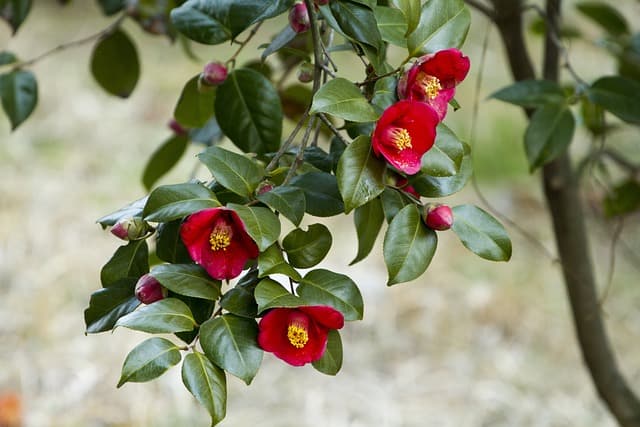Camellias, The Winter Queens, are the evergreen shrubs most famous for their spectacular blooms during the icy days, topped off by their compact shape. For shallow rooted plants like camellias, choosing a companion plant can be a little more on the tricky side.
Certain plants simply don’t get along with camellias, while others do. When it comes to plants that like to chill in the shade, like Camellias, it is wise to plant rhodies or azaleas as their companion plants. Besides liking the shade, Camellias incline themselves more toward an acidic environment, particularly between ph 5.0 and 5.5.
Although Camellias may seem quite picky, there are a variety of plants that may as well agree on being their lifelong companions. The following article will cover the top 10 companion plants for Camellias, along with the reasons behind their companionship.
Companion Plants for Camellias
More companion plants:
1. Flower Bulbs:
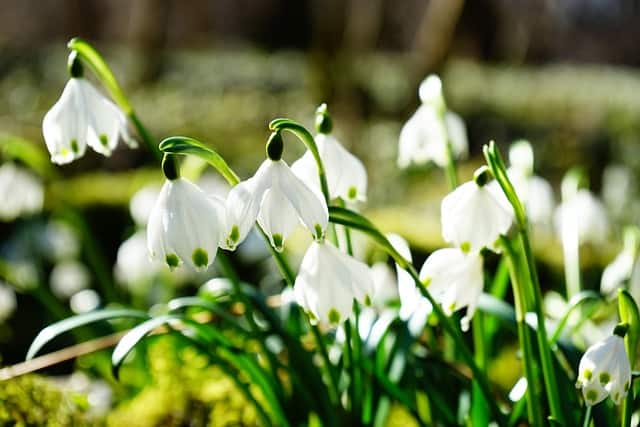
These are different for each season. Fall-planted flower bulbs take root during the winter, sprout, and bloom the following spring. Tender “Spring” bulbs can’t withstand cold ground temperatures, are sown in the spring, and bloom all summer.
Mature Size: The average mature size is 12-18 inches for flower bulbs
Flowering: Bloom best in the spring. They are not adaptable to extreme climatic conditions.
Key Features: In some species, the plump leaves of a bulb have expanded leaf bases that serve as food storage, allowing a plant to do nothing when water is limited.
2. Ornamental Grasses:

These are semi-artificial grasses that can settle well in suitable grounds and add to their beauty. Many species of ornamental grasses can also be used to soften the hard landscape and contrast it with other plants. Since they are adaptable to different garden styles and settings, they are available in various colors and textures.
Most gardens can handle several types. The shorter forms can also make an eye-catching container planting. The taller varieties are perfect for sensory gardening, where you can hear the breeze whispering through them.
Mature Size: They range in size between 6 to 180 inches.
Flowering: When planting ornamental grasses, choose spring or fall. There are many distinct kinds, and each has a different set of growing conditions.
Some prefer dry soil that retains water, while others thrive in moist soil that is also well-drained. Although some grasses may tolerate darkness, most thrive in the sun. Ensure that the grass you are cultivating is appropriate for the location.
Key Features: Ornamental grasses are becoming increasingly popular because they give gardens a new depth in the winter with their frost-covered foliage and seed heads that seem mystical. Grass can survive on its own throughout the hot summers, making it ideal for busy gardeners.
3. Perennial Plants:
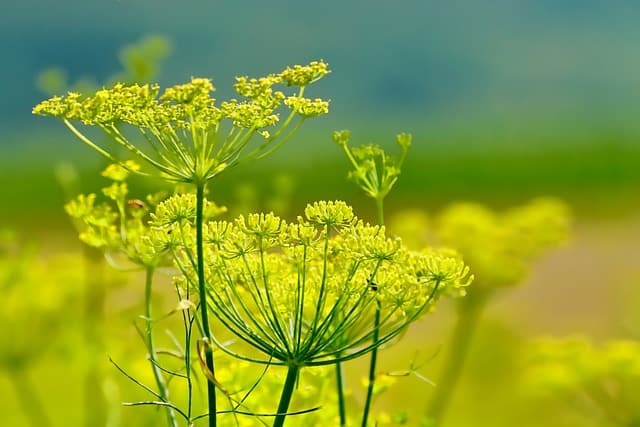
Perennial plants grow every spring and can survive up to three growing seasons. Gardeners frequently mix annuals and perennials in their yards since perennials typically have shorter blooming times than annuals.
Mature Size: They typically range between 20-30 inches in size.
Flowering: They should be planted during early summer as they grow during the summer and spring seasons. Their growth is halted during the autumn and winter seasons.
Key Features: Perennials have a wide variety of plants with different features that make them unique. The most noticeable one is their ability to withstand several conditions. This sometimes allows them to be catered to as annual plants and makes them excellent companion plants.
4. Multi Colored Shrubs:
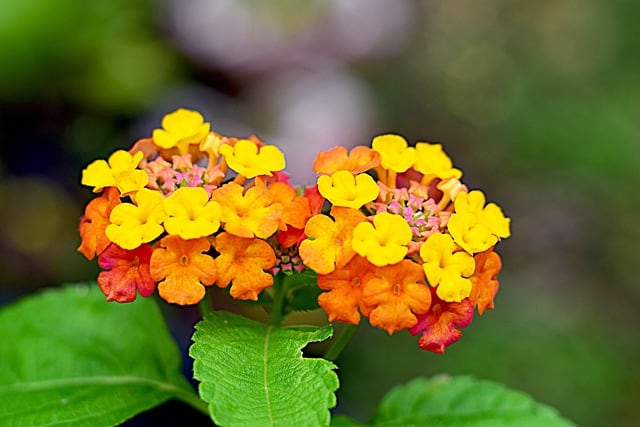
Among the garden’s brightest stars are shrubs with colorful leaves. They not only spruce up shrub beds and foundation plantings, but they also give perennial borders, letterbox gardens, and privacy plantings form and structure.
Not just during the plant’s flowering season but throughout the entire growing season as well, their vividly colored leaves add vibrancy to the garden.
Mature Size: Can reach up to 20 feet in height
Flowering: They can be planted during the summer and bloom in spring, fall, or even winter.
Key Features: Shrubs can survive harsh conditions, especially during the winter. Some can even withstand temperatures as low as -30 degrees Fahrenheit.
5. Fragrance-filled shrubs:
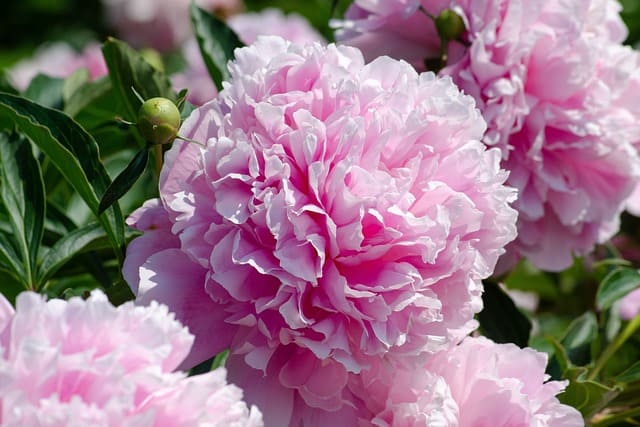
Without a doubt, fragrance-filled shrubs can ease more than one sense. It is crucial to plant a fragrant shrub in an area where others can appreciate its scent, such as next to a patio or near windows.
Multiple fragrant shrubs should not be in bloom simultaneously since each shrub’s full effect cannot be appreciated. Summer shrubs do well in extensive sunlight exposure hours, while winter ones don’t need as much.
Mature Size: They range in size between 4 to 33 feet.
Flowering: The shrubs can be planted between June and November.
Key Features: Blooms must be crushed or severely scarred after being cut, and they must then be immersed in warm water for several hours before arranging. After warming to room temperature, flowers collected on a chilly day will begin to smell.
6. Aesthetic Trees:
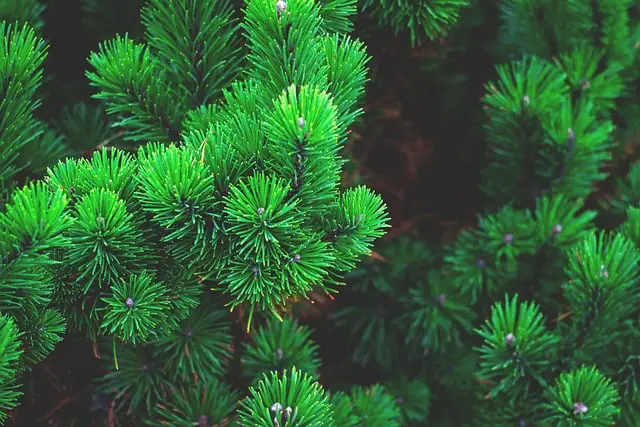
Some trees have unique qualities and can be used to complement Camellias. Japanese Maples and Acers are the top-ranking trees for this purpose.
The colorful and lush leaves and their changing properties with the weather make them a beautiful sight. Additionally, their barks are dark and heavily stable, making their structure stand out when the leaves are shed during the winter.
Mature Size: These trees can grow as high as 100 feet.
Flowering: They bloom during the summer and spring seasons and can survive harsh winter conditions. Some prefer the cold to bloom well.
Key Features: These plants can be grown as small shrubs or large trees, depending on the number of suitable growing conditions they are exposed to.
7. Daffodils:
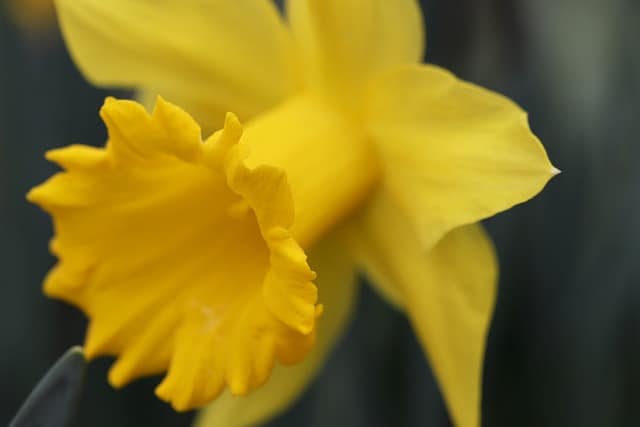
A beautiful addition to the spring garden are daffodils. These low-maintenance blooms bring rays of brightness that come back every year.
Mature Size: Daffodils grow in centimeters, between 12 to 16.
Flowering: These should be planted in summer to bloom well during spring.
Key Features: Daffodils look beautiful in every setting they are grown in, as long as the colors are consistent. They can be paired easily with different shrubs and annual and perennial plants.
8. Daylilies:
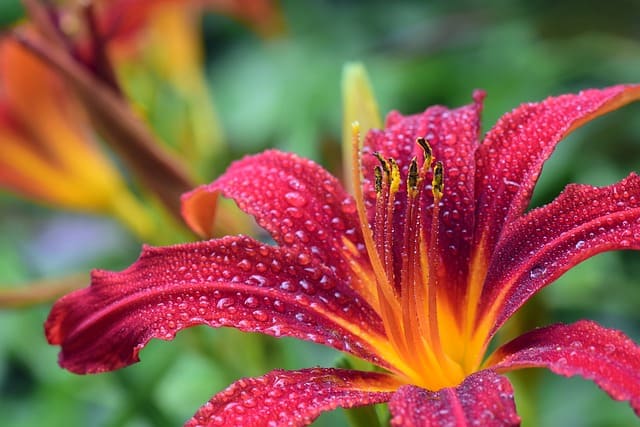
A delicate yet fragile flower, daylilies have been a garden favorite for centuries. They bloom and last for only a day, but if given enough effort, multiple ones can bloom for a month or even more!
Mature Size: Grow between one to 4 feet in height.
Flowering: The best time to plant these is during the fall or early spring.
Key Features: They prefer to grow in soil that is mildly acidic, and they are short-lived so they require the utmost care and attention.
9. Tulips:
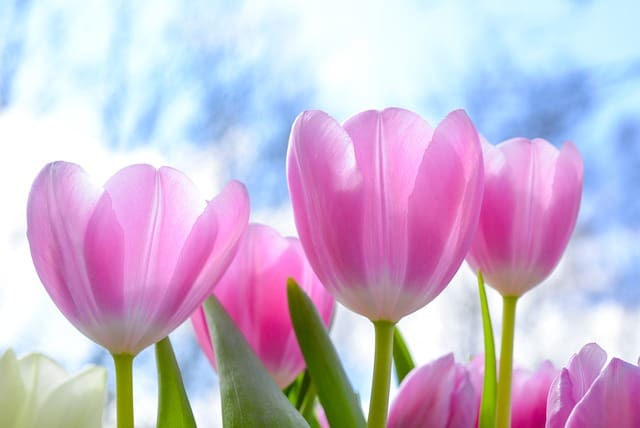
You can decorate your garden with a wide range of choices with the tulips of today, from bright red to timid yellow and every color in between!
Mature Size: Can range between 4 to 28 inches in height.
Flowering: Early tulips bloom in March and April, and mid-season varieties prolong the flowering period longer into spring. Bloom timings will vary depending on your region and the weather. Tulips may persist for 1-2 weeks in chilly temperatures.
Key Features: Their colors and bud shape are unique and strike the most.
10. Daphne:

Daphne is an attractive landscaping shrub with a seductive scent. From shrub borders and foundation plantings to stand-alone specimens, there are Daphne plant types to fit almost any purpose.
Mature Size: Range between 8 to 15 inches in height.
Flowering: Bloom between February and March.
Key Features: Most Daphne are either semi-evergreen, losing some leaves over the winter, especially in colder climates, or evergreen, holding their leaves all year.
Final Thoughts on Companion Plants for Camellias
The most suitable companion for your Camille is not a tough choice, but it depends entirely on your aesthetic sense and preference. As with any flower, beauty and peace are a given no matter what type you plant.
It is noteworthy, however, that the correct soil type and texture, along with the required water conditions, have to be met for the plant or plant collections to grow and thrive.
Sunlight hours and the need for shade are very important factors. Negligence of either of these is bound to have detrimental effects on the overall planting outcome.
Frequently Asked Questions
Can I grow Lavender with Camellias?
No. Lavenders complement Camellias well, as their lilac color and upright structure go well with any plant out there. However, Camellias are very delicate flowers and need some specific conditions to be met for them to grow, making them incompatible with Camellias.
What is the most suitable place to plant Camellias?
Positions with partial or complete shade are preferred by camellias. The greatest location is one that receives morning shade because the early sun can quickly dry off flower buds that are still developing. Because they are woodland plants, camellias do not thrive in a sunny, south-facing location.
Can you plant hydrangeas next to Camellias?
Since they do not compete for attention during the camellias’ blooming season, deciduous shrubs make excellent complements. Blue-flowered hydrangeas, like “Big Daddy,” thrive in the acidic conditions of camellias.

Hey, I’m Lisa and I’ve been an avid gardener for over 30 years. I love writing, talking and living in the garden! Feel free to connect with me on my socials below

